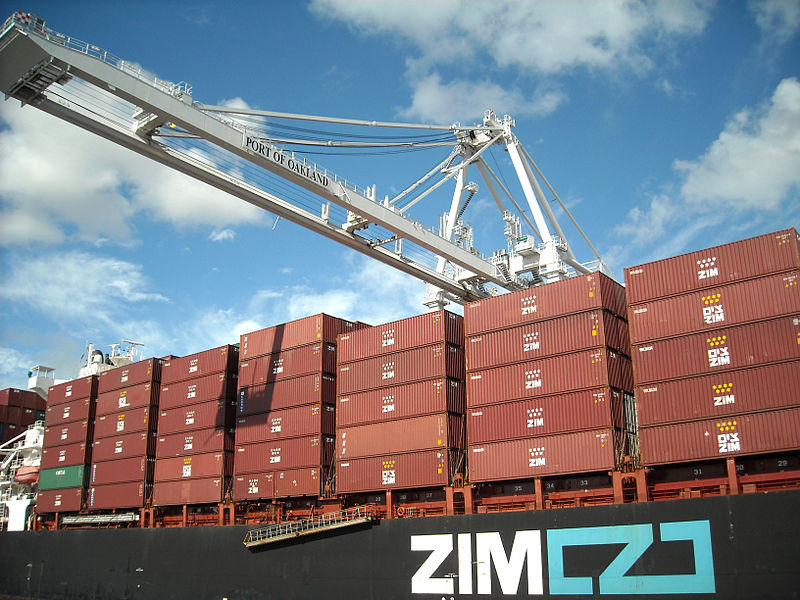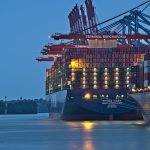The Present Struggle of the International Shipping Industry
Feast and Famine
It’s no secret that the international shipping industry, even for all the supply chain disruptions and bottlenecks, did very well during the pandemic. There was a shipping demand boom, but now the industry is seeing a reversal. Demand has plummeted, and with it, so have freight rates. Ocean freight carriers raked in billions upon billions during the demand boom, so they’re not exactly hurting too badly even as they report major drops in revenue and profit, even to the point of losses for some. For freight forwarders and other third party logistics (3PL) companies, however, it’s another story.
Freight forwarders and 3PLs generally did well during the shipping demand boom too. However, these companies tend to have a much smaller profit margin and weren’t at all likely to amass windfalls in the billions of dollars like the big shipping lines were able to do. Now that the economic realities of largely poor governmental policies through the pandemic have set in with the resulting economic uncertainty and a low demand international shipping period, many 3PLs are struggling. Their struggles are a reflection of the economy as a whole.
“Having seen several cycles in this industry for the past 38 years, we are deep into yet another cycle of feast and famine,” seasoned international shipping veteran and Universal Cargo CEO Devin Burke described it.
C.H. Robinson Lays Off Hundreds
Last week, the publicly traded 3PL broker C.H. Robinson Worldwide Inc. made international shipping headlines by laying off hundreds of employees.
According to a FreightWaves article by Mark Solomon, C.H. Robinson laid off approximately 300 people across the company. And this is its second workforce cut in the past seven months! In November, the company laid off about 650 people. Solomon also reported the company has been in turmoil since the beginning of the year.
That’s not surprising either, given the fact the last time I saw C.H. Robinson in the news, it was about the company’s highly negative Q1 financial results.
In a FreightWaves article back in April, John Kingston wrote how C.H. Robinson had reported double-digit declines in gross profits, operational income, earnings per share, and adjusted EPS. It seemed everything was pointing down for C.H. Robinson, and the company was already in the midst of a restructuring plan that had resulted in hundreds of lost jobs with hundreds more to come.
Shipping Line Zim Suffering Losses

The latest articles I’ve seen on the larger companies of the industry – the ocean freight carriers – focus in on the world’s tenth largest shipping line, Zim. The headlines are similar to ones I’ve seen in recent months for even bigger carriers like Maersk, MSC, and Hapag-Lloyd. That is to say the articles are about falling revenue and profits for the companies.
Yesterday, Greg Miller wrote in a FreightWaves article that Zim reported a net loss of $58 million for the first quarter of 2023. That is in stark contrast to the net income of $1.71 billion reported for the first quarter of 2022. This was driven by a 64% year-on-year decrease in average freight rates. Despite a 36% increase in rates compared to the first quarter of 2019, net losses were still over twice as large in the latest period than those prepandemic ones. Miller doesn’t fail to report that despite the losses, Zim still has a large cash cushion to fall back on, with total liquidity of $3.5 billion. This was a result of the windfall profits during the pandemic that I mentioned at the top of this post. Zim’s exposure to freight rates is a double-edged sword. The carrier is more exposed to the spot market and has a higher percentage of its capacity in the trans-Pacific than its competitors, which allowed it to outperform its rivals during the boom but likely causes it comparatively higher losses when spot market freight rates sink.
In fact, Miller went so far as to title his article, “Shipping line Zim gets hammered by high spot-rate exposure.”
Getting Past the “Doom and Gloom”
Overall, it’s a hard time for the international shipping industry. But those outside of it have been feeling hammered over the last couple years by high inflation. That has affected consumer spending and many retailers are still overstocked even as we’re coming to the peak season of international shipping. Companies like Zim and C.H. Robinson are hoping for a stronger second half to the year, spurred by the peak season. However, peak season projections are a mixed bag, and it’s hard to tell how long it will take for us to get past the period of famine, as Burke put it.
He expounded on the situation with a view that we are in for some tough times in the shipping industry and economy as a whole but also with a sense of optimism in the strength and resilience of the American people to get through this:
Question is, how long and how deep are we headed into famine. Of course it’s indicative of the overall sickness in our economy. With the current debt ceiling crisis that our idiot POTUS is now leading us into, we can either kick the can down the road with more debt, more bailouts, and – God forbid – more throwing away our tax dollars to the corrupt Ukraine money laundering machine, or we as a country can face our reckoning and allow this house of cards to topple.
Either way we are in for rough times ahead.
The silver lining is that despite this doom and gloom, America is made up of Americans, and we are fundamentally strong people who will navigate through this and learn and be a better country for it. But it’s going to be painful, and a lot of people need to go to prison before that happens.
Meanwhile, this industry will continue to operate as the wheels of this economy. Weak or strong, we will always need to ship stuff. So basically, now is the time to be lean, work smart, and explore different revenue streams. Because things will never be the same.





